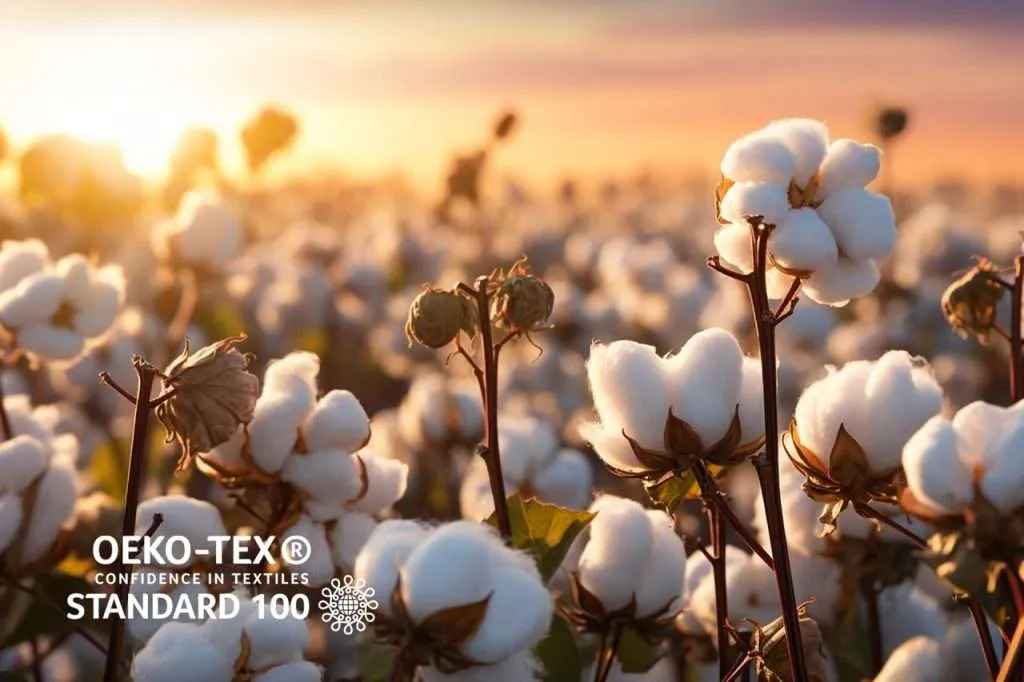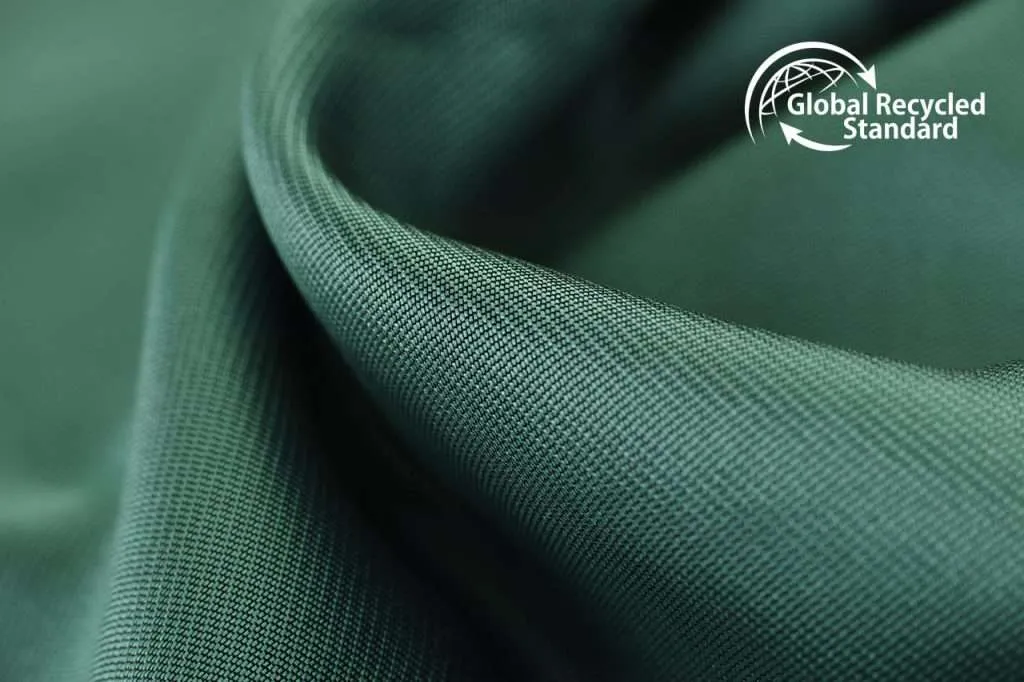Your Reliable High Quality Wholesale Custom Clothing Manufacturers

From Farm to Fabric: How Organic Cotton and Recycled Polyester Save the Planet
The fashion industry valued at USD 3 trillion must choose between recycled polyester and cotton as environmentally responsible fabric alternatives. These materials, including organic cotton recycled polyester, bring their own environmental benefits to the table, and their effects reach way beyond the fashion custom clothes on our backs.
Research shows organic cotton farming cuts global warming potential by 46% compared to regular methods. Recycled polyester manufacturing uses 59% less energy than its virgin counterpart. Both materials solve different environmental challenges effectively – organic cotton helps soil health and biodiversity thrive, while recycled polyester keeps plastic waste out of landfills.
Let’s take a closer look at these environmentally responsible fabric options and see which one could better serve our planet’s future.
The Environmental Crisis in Textile Production
Our closets hide a harsh truth: the textile industry ranks among our planet’s worst polluters. This environmental disaster spreads across multiple dimensions and leaves lasting damage to our ecosystems.
Water pollution from conventional cotton farming
Cotton farming takes up just 3% of the world’s arable land but uses a whopping 24% of insecticides and 11% of pesticides worldwide. These harmful chemicals spread beyond their fields and poison nearby water sources. This devastates aquatic life and harms communities downstream.
The water usage numbers paint a grim picture. Your single cotton shirt needs about 2,700 liters of water – what one person drinks in two-and-a-half years. Textile manufacturing causes 20% of industrial water pollution. The dyeing process alone gulps down 5 trillion liters of water each year. This amount could fill 2 million Olympic-sized swimming pools, making it the second biggest water polluter worldwide.
Plastic waste from virgin polyester production
Polyester now dominates the textile fiber market with 57% share, surpassing cotton. Its effect on the environment grows rapidly. Polyester comes from petroleum, a non-renewable resource that wreaks havoc on our ecology.
The carbon emissions tell a scary story. Polyester production for textiles released about 706 billion kg of greenhouse gasses in 2015. This equals the emissions from 185 coal-fired power plants. The apparel sector adds 8.3 million tons of plastic waste, making up 14% of all plastic pollution.
Synthetic textiles keep hurting the environment even after production. Ocean microplastics come in part from laundering synthetic textiles – about 35%. Each wash releases up to 700,000 microplastic fibers that end up in our food chain.
Chemical runoff and soil degradation
The textile industry uses about 43 million tons of chemicals yearly. These chemicals seep into soil and groundwater, threatening both environmental health and nearby human communities.
Cotton monoculture speeds up soil degradation through salt buildup and erosion. Intensive farming ruins topsoil quality. This reduces water retention and increases erosion risk. Today, up to 40% of Earth’s land faces degradation in part because we just need to produce textiles and other consumer goods.
Textile waste makes soil problems worse. Most old textiles rot in landfills. Synthetic fibers take hundreds of years to break down and leak chemicals into the surrounding soil.
Organic Cotton: Cultivating Sustainability from the Ground Up
Organic cotton serves as a better alternative to conventional farming methods and helps reduce environmental damage. This eco-friendly method grows cotton without synthetic pesticides, fertilizers, or genetically modified seeds.

How organic farming methods preserve soil health
Healthy soil management is the life-blood of organic cotton cultivation. Research shows organic cotton fields have higher organic matter content—averaging 8.33% compared to 7.37% than conventional fields. These soils work as living ecosystems. They host various microorganisms that improve nutrient cycling and carbon sequestration.
Crop rotation is essential. It prevents soil disease and builds fertility. Organic farmers use cover crops, composting, and minimal tillage to keep soil structure intact. These methods create soil that works like a sponge. It absorbs water during floods and keeps it during droughts.
Water conservation techniques in organic cotton fields
Experts still debate organic cotton’s water efficiency. Some sources claim it reduces water consumption by up to 91%. Recent studies challenge this number. The Transformers Foundation report shows water usage depends on climate and irrigation techniques more than organic status.
Notwithstanding that, organic cotton farms use effective water conservation methods. They use techniques like rainwater harvesting and drip irrigation to save water. Healthy organic soils with better structure retain more moisture. This could mean less irrigation during dry spells.
Economic benefits for farming communities
Organic cotton creates real financial benefits for farmers. They spend less on production by avoiding synthetic inputs. Organic cotton also sells at premium prices. This can boost farmer income by 20-25%.
The benefits go beyond individual farmers. Diverse cropping systems include rotational food crops like legumes, grains, and vegetables. These provide food security and extra income sources. Organic cotton farming creates more local jobs. This helps reduce migration from rural areas to cities and preserves traditional farming communities.
Organic cotton shows how an integrated approach to textile sustainability affects soil, water, and economic systems. Its influence reaches way beyond the reach and influence of environmental concerns alone.
Recycled Polyester: Transforming Waste into Wearables
Recycled polyester tells a compelling sustainability story that rivals organic cotton’s benefits. This innovative material gives discarded plastic bottles a new life as functional fashion and helps address our planet’s growing plastic problem.

The journey from plastic bottle to fabric
The amazing transformation starts at recycling facilities. Workers collect PET bottles, clean them, and sort them carefully. Special machines shred these bottles into flakes. The flakes melt into pellets, which then become yarn through a process that looks like pulling and spinning taffy. The yarn becomes fabric ready for cutting and sewing. The process works quickly—a single t-shirt needs about 9 plastic bottles. A complete recycled polyester outfit keeps 6-8 bottles out of landfills.
Energy savings compared to virgin polyester
The numbers paint an impressive picture of environmental benefits. Recycled polyester uses 50-59% less energy than virgin polyester, which needs coal, petroleum, air, and water heated at extreme temperatures. It also produces 70-77% fewer greenhouse gas emissions. The water savings are remarkable—20-90% less water depending on how it’s made. These benefits add up fast. One manufacturer recycled 52 tons of fiber in 2023—that’s like recycling 138,667 beer cans.
Durability and performance benefits
Recycled polyester matches virgin polyester’s quality and durability. Standard tests show excellent results for tensile strength and resistance to wear. The material works well for both technical clothing and fashion. It dries quickly, wicks moisture effectively, and resists color fading, shrinking, and tearing.
Real-world testing backs up these performance claims. Premium recycled polyester yarns use 150D/144F yarn with high twist levels that make them incredibly strong. This explains why major global brands now use recycled polyester in demanding products from workout clothes to outdoor equipment.
Comparing Environmental Footprints: Is Cotton or Polyester Better?
A look at green fashion choices reveals surprising facts when we compare different materials directly. Cotton and polyester have very different effects on the environment. The “better” choice really depends on which environmental factors matter most to us.
Water usage differences
The water needs of these materials tell a shocking story. Cotton ranks among agriculture’s thirstiest crops – it takes about 2,700 liters of water to make just one t-shirt. Regular cotton farming uses 11% of all farming water worldwide. Polyester production needs much less water – only 17 liters per kilogram of fiber. This is nowhere near cotton’s 22,200 liters.
Recycled polyester saves even more water. It uses 90% less water than new polyester. Some companies say they use less than one gallon (about 3.8 liters) of water to make each recycled polyester shirt.
Carbon emissions throughout lifecycle
The carbon footprint story gets more complicated. A polyester t-shirt creates about 20.56 kilograms of CO2 in its lifetime. Just making the raw material releases 5.95kg of CO2. People used to think cotton had a much bigger footprint. New studies show cotton makes about 8.4kg of CO2 per t-shirt while polyester creates 7.2kg.
Recycled polyester creates 75% less carbon emissions than new polyester. The Textile Exchange found that organic cotton farming cuts global warming potential by 46% compared to regular cotton.
Biodegradability vs. recyclability
This is where we see the biggest difference between these materials. Cotton breaks down naturally and completely – even faster than oak leaves in water. Most cotton products, including bleached ones or those with softener, break down in commercial compost facilities. Polyester doesn’t have this ability.
Polyester shines in its recycling potential. While it won’t break down naturally and might take 200 years to decompose, we can recycle it into new clothes to reduce waste. The textile industry creates up to 10% of global greenhouse gasses – more than international flights and maritime shipping combined. This makes both recyclability and biodegradability crucial for the environment.
Both materials come with their own environmental trade-offs. The best choice depends on your specific green priorities.
Conclusion
Organic cotton and recycled polyester each provide unique answers to fashion’s environmental challenges. Organic cotton excels at preserving soil and breaks down naturally, while recycled polyester uses minimal water and helps reduce plastic waste.
Environmental priorities play a key role in choosing between these materials. Organic cotton becomes the ideal choice when soil health and biodegradability matter most. Its higher water needs create a major trade-off. Recycled polyester proves valuable through its low water consumption and reduced carbon emissions, though it won’t biodegrade.
These materials serve as partners rather than rivals for various uses. Simple everyday basics that need to last and eventually decompose work best with organic cotton. Recycled polyester fits perfectly with technical gear and performance wear, particularly when items need to manage moisture and last longer.
A clear grasp of these differences helps consumers make smarter choices. Every eco-friendly purchase of organic cotton or recycled polyester helps reduce fashion’s environmental impact and creates a greener future for the industry.
FAQs
Q1. How does recycled polyester benefit the environment?
Recycled polyester offers several environmental benefits. It reduces plastic waste by repurposing discarded bottles, consumes up to 59% less energy than virgin polyester production, and generates 70-77% fewer greenhouse gas emissions. Additionally, it significantly decreases water usage, with some manufacturers reporting up to 90% reduction compared to virgin polyester.
Q2. What are the advantages of organic cotton farming?
Organic cotton farming preserves soil health by avoiding synthetic pesticides and fertilizers. It employs techniques like crop rotation and composting, resulting in higher organic matter content in the soil. This approach also benefits farming communities economically by reducing production costs and potentially increasing farmer income by 20-25%.
Q3. Which is more environmentally friendly: cotton or polyester?
Both materials have different environmental impacts. Cotton requires significantly more water (2,700 liters for a t-shirt) compared to polyester (17 liters per kg of fiber). However, cotton is biodegradable, while polyester is not. Recycled polyester and organic cotton both offer reduced carbon footprints compared to their conventional counterparts. The choice depends on specific environmental priorities.
Q4. How does recycled polyester compare to virgin polyester in terms of quality?
Recycled polyester maintains essentially the same quality and durability as virgin polyester. It demonstrates positive results in tensile strength and abrasion resistance tests, retaining the quick-drying and moisture-wicking properties of conventional polyester. The material also maintains colorfastness and resistance to shrinking and tearing, making it suitable for various applications, including performance wear.
Q5. What are the water conservation benefits of organic cotton?
While organic cotton’s water efficiency is debated, many organic cotton operations implement effective water conservation strategies. These include rainwater harvesting and drip irrigation techniques. Additionally, the improved soil structure in organic cotton fields helps retain moisture better, potentially reducing irrigation needs during dry periods.






